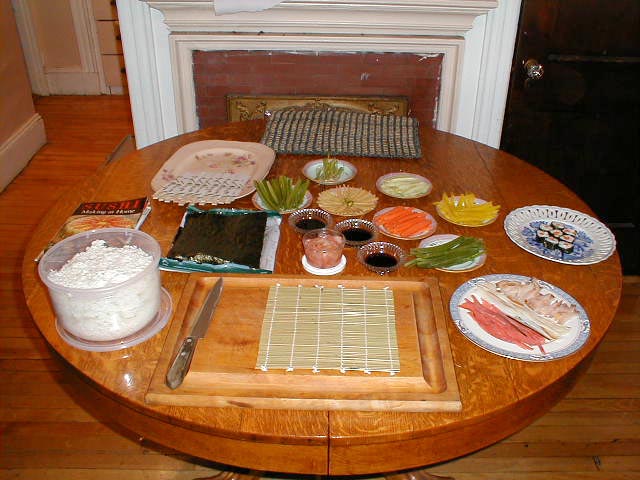
The table- laid out for your perusal

The table- laid out for your perusal
Due to Popular Demand, my roomate and I have hosted a couple of Sushi and Japanese Animation Parties. These pictures are from our second one. Having discovered how simple several types of sush are to prepare, I decided i would like to build a small resource to help encourage other people to give it a try.

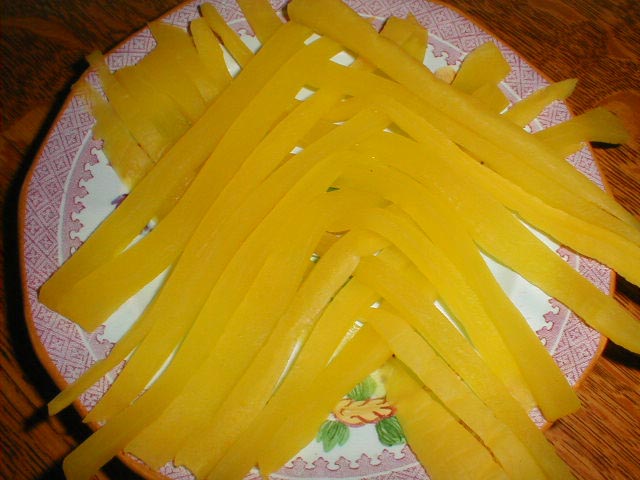
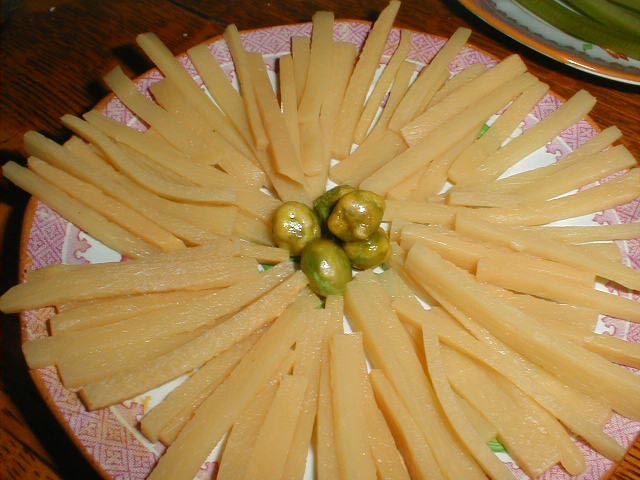
Smoked fish
Pickled Radish
Bamboo Shoots
The ingredients and equipment for sushimaking are fairly straight forward. There are really only a couple of things that are specialized, the rest of the ingredients can be found in most Grocery stores, or in your own garden. You will need a small bamboo mat (as seen above on the cutting board), Shredded Laver, also called Nori, in sheets (the black squares above and to the right of the cutting boeard) and japanese rice. Particularly for sushi making, the right kind of rice is crucial. Japanese rice has its own speial properties (ie extreme stickyness) that are inprtant to the structure of your sushi. Regular rice, Jasmine rice, or any of the quick "Minute" types not will do. The rice is cooked with the addition of some rice wine vinegar to the water. There are also commercially available mixes, but just the vinegar works quite well. Any japanese rice you purchase should have the directions on the back. You will want the rice to cool before you begin working ith it. The rest of the roll is made up of whatever you wish to put in it. I use smoked fish from a local Russian market, because I like the flavor, and it is pre-cooked (and therefore completely safe), but still a proper consistency for the rolls. You can include any type of fish or vegetable- I prefer mackerel or fresh tuna, when I am not using smoked fish, and I like carrot, cucumber, scallions, celery, and avacado as vegtables. We also used canned bamboo shoots, and pickled radish, both pictured above. the pickled radish adds a really great bright yellow color, and a slightly tart flavor. Wasabe, a type of horseradish, soy sauce and pickled ginger make excellent condiments. I favor mixing some wasabe in with the soy sauce, to makke dipping the sushi easier. Wasabe is very hot, so it can be a touch difficult to not put too much on your roll. We discovered that celery, sliced in thin strips, and left overnight in the refridgerator in vinegar also makes a nice addition. For addtional equipment you will want a very sharp knife, a damp towel, a cutting board, and a plate to put the finished product on.
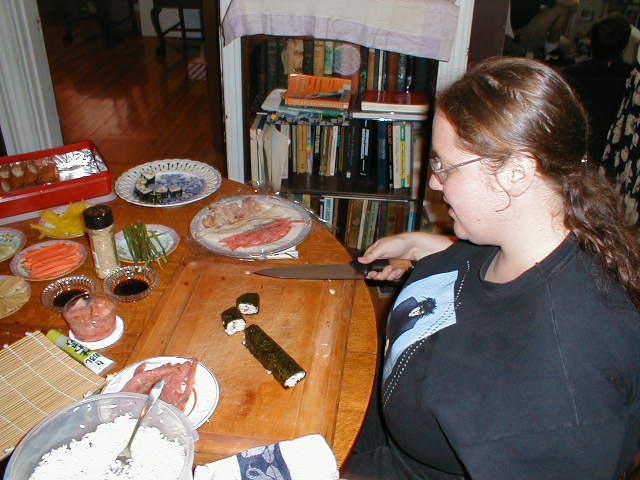
Your intrepid author, hard at work......
The most time consuming part of making sushi is preparing the ingredients. I strongly reccomend slicing the fish and vegetables before you begin assembling the rolls. The rolls are fairly quick to assemble. To assemble the rolls, place the mat on the table in front of you, running horizontally. Place a sheet of Nori on the mat. Then place rice on the mat about 1/2 inch or so deep, coving 2/3 of the sheet. Place your fillings on top of the rice, running arrallel to the sticks in the mat. Roll the bundle away from you until it forms a cylinder. this may take some mall trial and error. When you have your cylinder- slice it into 1 inch thick pieces. Some types of nori are scored to make this easier. Important tip- wipe the blade of your knife with the damp towel between each slice, so the knife will not stick as it cuts. Serve, eat and enjoy!
If you are ready for somthing a touch more challenging- you can try the "Inside-out sushi" pictured below. Make the first roll fairly small and thin, and isntead of using nori to wrap it a second time, use cling wrap. You cna then roll the sushi in seame seeds, finely chopped herbs or seaweed.
Finshed Product-
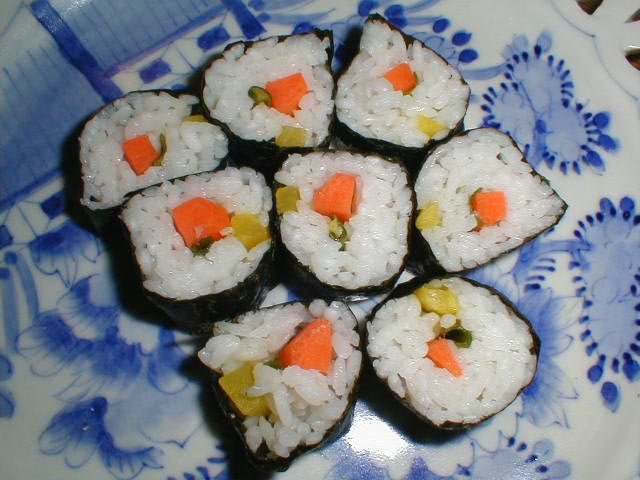
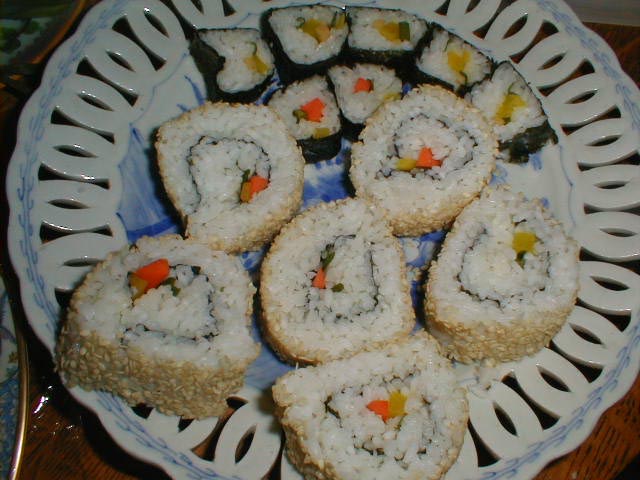
I have a nagging feeling I have forgotten important and obvious things, If I have, please email me!